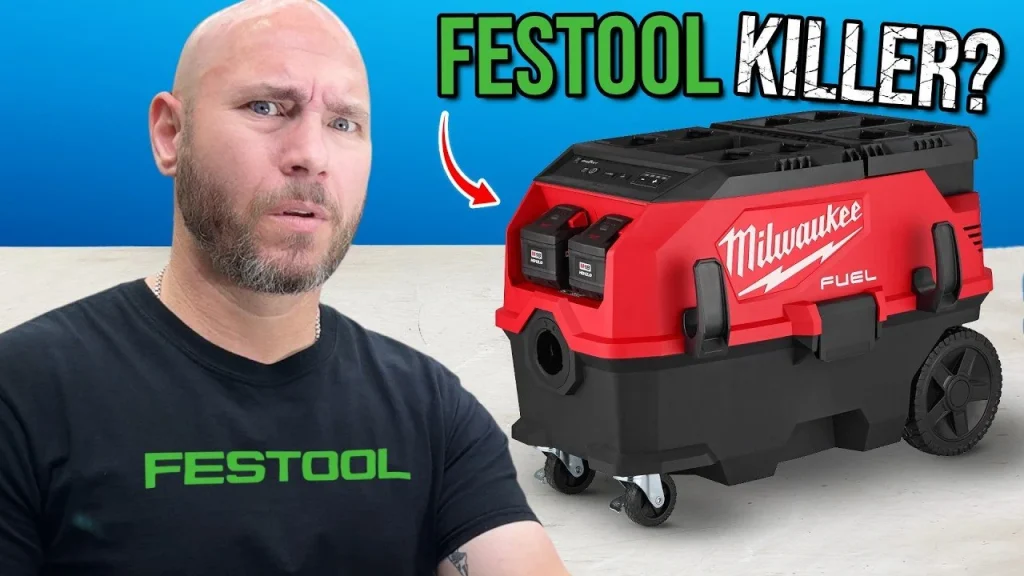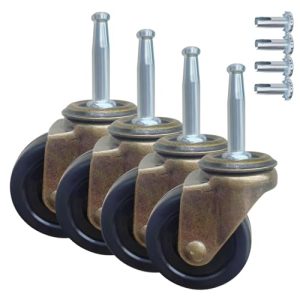Are you tired of dust taking over your workshop and making your tools and workspace messy? A good dust collection system can change that for you.
But with so many options out there, how do you know which one is right for your needs? You’ll find clear, honest reviews of the best workshop dust collection systems. By the end, you’ll feel confident choosing the perfect system to keep your workspace clean and your air fresh.
Keep reading to discover which dust collector fits your workshop like a glove.
Credit: www.lumberjocks.com
Why Dust Collection Matters
Dust collection in your workshop isn’t just about keeping the space tidy—it plays a crucial role in your health, work speed, and tool longevity. Ignoring dust can lead to serious problems that might slow you down or cost you more in repairs and medical bills. Understanding why dust collection matters helps you make smarter choices for your workshop setup.
Health Risks Of Dust Exposure
Breathing in dust from wood, metal, or other materials can cause irritation and long-term lung problems. Dust particles can trigger allergies, asthma, and even more severe respiratory diseases over time. Have you noticed sneezing, coughing, or eye irritation after a day in the workshop? That’s your body telling you dust is a problem.
Using a dust collection system reduces airborne particles, keeping your air cleaner and your lungs safer. It’s not just about comfort—it’s about protecting your ability to work for years without health setbacks.
Improving Workshop Efficiency
Dust buildup slows you down by cluttering your workspace and tools. When your workbench is covered in dust, measuring and assembling parts becomes harder and more error-prone. Have you lost time wiping down surfaces or redoing parts because of dust interference?
A good dust collection system keeps your area clear, letting you focus fully on your tasks. Less cleanup means more time for actual work, improving your overall productivity.
Protecting Tools And Equipment
Dust doesn’t just settle on surfaces—it can get inside your power tools, causing damage and reducing their lifespan. Fine dust particles can clog motors and bearings, leading to costly repairs or replacements. You might think regular cleaning is enough, but dust inside tools often goes unnoticed until something breaks.
Keeping dust controlled helps your tools run smoothly and last longer. Investing in dust collection saves money and frustration by preventing premature wear and tear.
Credit: www.lumberjocks.com
Types Of Dust Collection Systems
Dust collection systems come in various types. Each type suits different workshop needs and space. Choosing the right system improves air quality and workshop safety. Understanding the main types helps make better buying decisions.
Single-stage Collectors
Single-stage collectors pull dust and debris directly into a collection bag or bin. They use one step to separate dust from air. These systems work well for light dust loads. They are simple, affordable, and easy to maintain. Best for small workshops with low dust production.
Two-stage Collectors
Two-stage collectors separate larger debris before fine dust reaches the filter. The first stage collects heavy chips in a drum or bin. The second stage filters out smaller dust particles. This system keeps filters cleaner longer. Ideal for workshops with heavy dust and wood chips.
Portable Vs. Stationary Units
Portable dust collectors are easy to move around the workshop. They fit small spaces and work with various tools. Stationary units are fixed and usually more powerful. They handle larger dust volumes and serve multiple machines. Choose portable for flexibility and stationary for high capacity.
Key Features To Consider
Choosing the right workshop dust collection system requires understanding its key features. These features ensure efficiency, convenience, and a clean work environment. Below are the essential elements to evaluate before making a decision.
Airflow And Suction Power
Airflow and suction power determine how effectively a system collects dust. Higher airflow, measured in cubic feet per minute (CFM), means better dust removal. Ensure the system can handle your workshop’s dust output. Match the suction power to your tools for optimal performance.
Filtration Efficiency
Filtration efficiency affects the system’s ability to trap fine dust particles. Check for filters rated to capture particles as small as 1 micron. HEPA filters are ideal for capturing harmful dust and ensuring cleaner air. A good filter protects your health and keeps the workspace safe.
Noise Levels
Noise levels are important for maintaining a comfortable workspace. Loud systems can be distracting and unpleasant during long projects. Look for systems with decibel ratings below 70 for quieter operation. Some models include noise-dampening features to reduce sound further.
Ease Of Maintenance
Simple maintenance ensures the system works efficiently over time. Opt for systems with easily removable filters and collection bags. Check for clear instructions on cleaning and replacing parts. A low-maintenance system saves time and reduces downtime in your workshop.
Top Dust Collection Systems Reviewed
Choosing the right dust collection system can make your workshop safer. A good system reduces airborne particles and keeps your workspace clean. To help you decide, we’ve reviewed top-performing dust collection systems. Each option fits different needs and budgets. Explore the best choices for every type of workshop below.
Best Overall Performer
The best overall dust collection system combines power and efficiency. It handles large volumes of dust with ease. Its motor is powerful yet operates quietly. The design ensures minimal clogs and easy maintenance. This system suits both small and medium-sized workshops. It also includes advanced filtration for cleaner air quality.
Best Budget Option
This budget-friendly system offers great value without cutting corners. Its compact design makes it easy to store when not in use. Despite its price, it efficiently collects dust from common tools. The system is lightweight and ideal for hobbyists. It’s perfect for those who need a reliable tool on a tight budget.
Best For Small Workshops
For limited spaces, this system is a perfect fit. Its small footprint saves precious room in tight areas. The motor is powerful enough for small-scale projects. Its portability allows you to move it between tools effortlessly. This system keeps small workshops clean without taking up much space.
Best For Heavy-duty Use
This system is designed for heavy-duty applications. It handles industrial-grade workloads with ease. Its large dust capacity ensures fewer interruptions during work. The motor provides strong suction for continuous operation. It’s ideal for professional woodworkers and large workshops. The durable construction ensures longevity and reliability.
Installation Tips For Optimal Performance
Getting your workshop dust collection system set up right can make a huge difference in how well it performs. Installation isn’t just about plugging it in and turning it on. Careful planning and attention to details like location, ductwork, and safety will help you get the clean air you want without headaches down the line.
Choosing The Right Location
Where you place your dust collector affects both its efficiency and your workspace. Ideally, position it close to the main dust-producing machines to reduce the length of duct runs. Shorter ducts mean less chance for dust to settle inside and better suction overall.
Think about accessibility too. You’ll need room to service filters and empty the collection bin without moving heavy equipment around. Also, avoid placing the unit near areas where dust could easily escape back into your breathing zone.
Proper Ductwork Setup
Your duct system acts like the lungs of your dust collector. Smooth, straight ducts with as few bends as possible keep airflow strong. If you can’t avoid bends, use wide-radius elbows to reduce air resistance.
Use airtight connections and seal joints with foil tape—not duct tape—to prevent leaks. Leaks reduce suction and let dust escape. Also, choose the right duct diameter based on your system’s airflow requirements. Too small, and it chokes the system; too large, and the airspeed drops, causing dust to settle.
Safety Precautions
Dust collection systems handle fine, combustible dust, so safety should never be an afterthought. Make sure your electrical setup follows local codes and includes proper grounding to reduce fire risks. Installing a spark arrestor or fire extinguisher nearby can prevent small sparks from turning into disasters.
Regularly inspect your ductwork for dust buildup or damage. Clogged ducts can cause pressure drops and increase fire risk. Are you scheduling these safety checks as part of your maintenance routine?
Maintaining Your Dust Collection System
Maintaining your dust collection system keeps your workshop clean and safe. Proper care improves system efficiency and extends its life. Regular checks prevent costly repairs and downtime.
Regular Filter Cleaning And Replacement
Filters trap dust and debris from the air. Clean filters often to maintain strong airflow. Use a soft brush or compressed air to remove dust. Replace filters when they show wear or clogging signs. Fresh filters improve dust capture and protect your equipment.
Checking For Air Leaks
Air leaks reduce system power and increase dust in the workshop. Inspect hoses, clamps, and connections for cracks or loose fittings. Seal leaks with tape or replace damaged parts. A tight system keeps airflow steady and dust controlled.
Troubleshooting Common Issues
Dust collection problems can cause poor performance. Look for reduced suction, strange noises, or motor overheating. Clear blockages in hoses and ducts. Check electrical connections and clean the motor fan. Fix issues early to keep your system running smoothly.

Credit: www.reddit.com
Frequently Asked Questions
What Is A Workshop Dust Collection System?
A workshop dust collection system captures and removes dust, debris, and particles from woodworking, metalworking, or industrial tasks. It improves air quality, protects tools, and ensures worker safety. These systems vary in size, efficiency, and features to suit different workshop needs.
How Do I Choose The Best Dust Collection System?
To choose the best system, consider your workshop size, type of tools, airflow requirements, and budget. Look for durability, ease of use, and filter quality. Reading reviews and comparing specifications can help you find the most suitable option.
Are Portable Dust Collection Systems Effective For Small Workshops?
Yes, portable systems are effective for small workshops. They are compact, affordable, and easy to move. They provide sufficient dust control for limited spaces. However, ensure the system meets your airflow and filtration needs.
What Is The Ideal Airflow Rating For Dust Collectors?
The ideal airflow rating depends on your tools and workshop size. For small tools, aim for 400-600 CFM. Larger tools may require 800-1,200 CFM. Always match the airflow to your equipment for optimal performance.
Conclusion
Choosing the right dust collection system keeps your workshop clean and safe. Good airflow and strong filters help trap dust effectively. Quiet operation and easy maintenance save you time and stress. Consider your workshop size and budget before deciding. A reliable system protects your health and tools.
Clean air means better work and fewer problems. Take time to compare features and reviews. A smart choice makes your workshop a better place to work.








